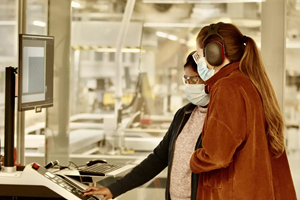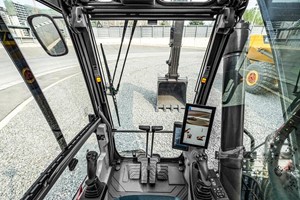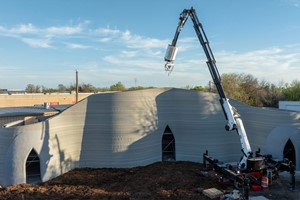To ensure there will be enough housing available for a growing population by 2060, recent studies suggest that we need to construct the equivalent of the building space of New York City every month for the next 40 years. Not only is the size of this project a tremendous challenge, but so is the ecological footprint of the building sector. Currently, it accounts for about 40% of global greenhouse gas emissions.
Linear economy principles, for one, generate huge amounts of waste all along the life cycle of building materials. We extract resources from the earth, produce construction materials, apply them in building projects, and dispose of them at the end of their useful life. However, this has not always been the case. Up until a hundred years ago, the reuse of building materials was standard practice. For example, when a major earthquake struck Rome’s Colosseum in 1348, the rubble was reused to build palaces, churches and hospitals.
Recently, I was confronted with the question: “How can we foster circular construction and make it profitable in the complex world of today?” The engineering office, Elioth, set the bar when they gave disused bent glass from the former façade of the Centre Pompidou in Paris a second life. While the glass was still in good condition, it had to be replaced due to new standards and security guidelines. I found an opportunity for the team to deliver the glass panels to Maximum Architecture. The architectural firm used the Pompidou glass to construct stunning, organically shaped office partitioning walls.
Unfortunately, since the construction sector operates in such a fragmented way, such upcycle processes are anything but smooth. I had to ask myself: “How could we make this process easier? How could we utilize digital technologies to connect people with reusable building materials with those who have upcoming projects? A kind of Tinder for building components, perhaps?”
Digital technologies for enabling circular constructions
In search of a new technology to automate the reuse, I reached out to Nancy Bocken and Sultan Çetin, two other experts in digitalization for circularity. Together, we honed in on four of the most promising digital innovations that could help the building sector transition to a circular economy.
- Digital models and platforms
To automate circular construction, we need to collect, index and monitor data about the materials we store in buildings. Only then is it possible to use our buildings as a resource, instead of sourcing raw materials from the Earth. Several existing digital platforms list local materials available for reuse. In such platforms all of the information about a specific building component is recorded using Building Information Modeling (BIM) and material passports. These passports contain the relevant data about the material such as geometry, properties, quantities, location and ownership status. By connecting the supply and demand sides, digital platforms such as Excess Materials Exchange can create circular markets and facilitate communication and collaboration between value chain actors.
- AI and big data
When building with previously used materials, the accessible materials largely influence the design. Therefore, it is crucial to predict when and where certain materials will become available. Artificial intelligence combined with big data analytics can foresee the amount of recyclable, reusable and waste materials from images. Universities such as ETH Zurich and the Institute of Advanced Architecture of Catalonia have developed machine learning algorithms for detecting reusable windows from Google Street View images. Furthermore, the data on geographical information systems (GIS) can be used to identify, map and manage resources in building stocks for future upcycling or recycling projects and evolve circular construction methodologies.
- Blockchain technology and IoT
Since the construction industry’s supply chain has complex subcontracting and liabilities, it is necessary to offer transparent value transactions. Blockchain technology serves as a secure way to trace materials. Additionally, tagging technologies such as quick response (QR) codes and radio frequency identification system (RFID) chips are also interesting for material tracking. In the “ETH Reuse Dome” built with my research group, we engraved QR codes onto every building component leading directly to the material passport. Tagging methods also enable us to use the Internet of Things (IoT) to gather, store, and transmit data on the condition and availability of material using cloud computing and wireless sensor networks.
- Digital manufacturing
To save materials for reuse requires dismantling buildings with caution. Currently, this process is mostly done by hand, making it a difficult, time-consuming or even dangerous endeavour. Robotic manufacturing – well-known in the automobile industry – could facilitate the disassembly of buildings as well as the sorting process of salvaged materials. Even reconstruction could improve with digital manufacturing: Additive manufacturing such as 3D printing, and subtractive manufacturing like computer numerical control (CNC) milling make it possible to produce the complex connections needed for the unique shape of saved components.
Buildings with a long lifespan are composed of many parts and use diverse resources. Consequently, many stakeholders are involved – making the industry extremely compartmentalized and slow in adopting digital innovation. Even though we need to be aware of the potential trade-offs and rebound effects (e.g., when using the energy-intensive blockchain technology), digital technologies serve as a prerequisite for a paradigm shift to a circular construction economy. In addition, digital tools could simplify collaborations and improve communication, bringing stakeholders closer together to address climate change collectively.











